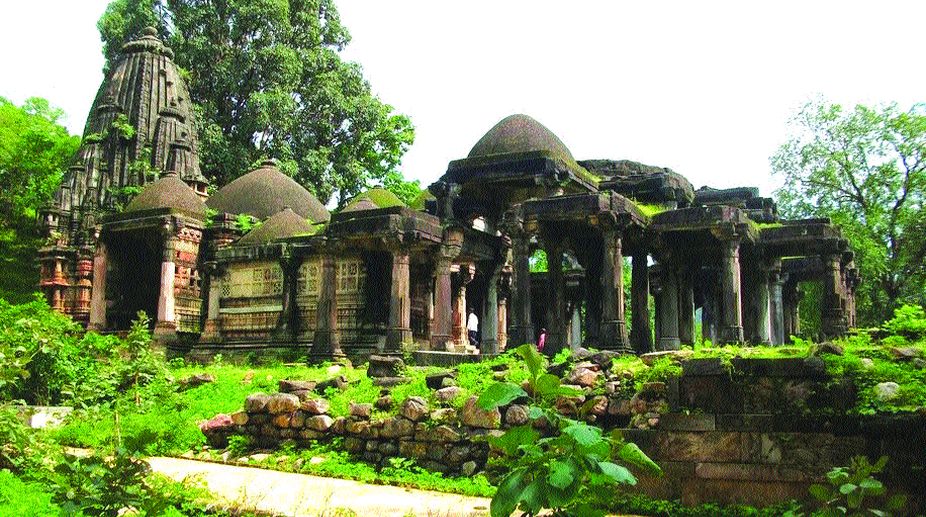Is it that time of the year yet when one wants to skip that monotonous life routine and embrace the winds again? Are those plans of capering across the town crossing the CPU again? If yes, one has landed the doubt-ship at the correct runway! A beautiful tent city, guarded by lush green forest, is the destination. Just a three hour head-out from the clamouring city of Ahmedabad, takes one to the town of Polo, articulated with a roll in the tongue.
Polo Festival
The old Polo city came up around the Harnav stream, an old water body mentioned in the Puranas. It was established in the 10th century AD by the Parihar lords of Idar and was then vanquished in the 15th century by the Rathod Rajputs of Marwar. The name Polo has its origin from a Marwari word "Pol", which implies entrance. The name derives its significance from its location on the fringe of Rajasthan and Gujarat, interfacing the two states. It was placed between Kalaliyo in the east, the most astounding stop in the zone, and Mamrehchi in the west, thought to be sacrosanct by the local adivasis.
The Polo Celebration 2017 was inaugurated by Gujarat Chief Minister on 5 January and showcased social projects at the Polo makeshift camp in Abhapur (Vijaynagar). Polo Festival is celebrated each year by Gujarat Tourism to advance the legacy of Polo backwoods. Polo Festival 2017 was a festival of the rich legacy of Polo backwoods. Green mountains watch this woods and the Harnav River quenches its thirst. The presence of the old remains of Jain and Hindu sanctuaries in this unblemished environment is relieved by interfacing nature with a deep sense of being.
A cultural night showcasing the traditions of the Rajasthani community was the centrepiece of the event. Matching the rhythms of the folk music were the villagers dancing to their hearts' content. Plays were put up that spoke of the customs and traditions of their community. Local people, wearing ethnic dresses, serving traditional food and talking in their native language, is what the Polo Festival is all about. One of the most endearing intrusions during the celebrations came from the surrounding Polo Forest, which is home to more than 200 types of winged creatures, including the jungle fowl. Migratory birds too visit Polo during the celebration time. Their calls resonate each morning in Polo.
The indigenous people living here are descendants of the Bhil warriors, who helped Maharana Pratap. Presence of more than 450 varieties of therapeutic herbs and a bountiful vegetation makes Polo celebration an incredible chance to experience nature at its best.
Polo forest
Not so long ago, this region was not much known and attracted not many visitors. The delightful backwoods zone, close to Abhapur town, is known as Polo forest, situated in Sabarkantha area just 180 km from Ahmedabad. This is the most popular among the week-end getaways near Ahmedabad. With development and improved facilities, the number of tourists has grown significantly in the past couple of years.
The forest sanctuaries date back to 1,500 years. The fig trees are great spots to look for the endangered Gray Hornbill and Brown-headed Barbet that will come to snack on the fruits. Dim Hornbills can likewise be found on a Banyan tree close to the camp ground. On the opposite side of the camp are Woodpeckers and at a specific half-hour in the evening (the time changes with sunset) flocks of birds settle down for the night.
The forest is crossed by a lovely stream, which is so picturesque that it can bring out the best even in a photography-challenged person. A beautiful stepwell, one of the ancient water harvesting structures dotting Gujarat, reflects the artistry of Mother Earth.
Ancient temples
The ancient temples of Polo in Khedbrahma and Vijaynagar taluka stand out for their elegance amid the long tract of forest in the lap of Aravali Hills. These include the imposing Shiva and Jain temples surrounded by untouched beauty of nature. The temples are believed to be from the 14th and 15th century. Their architectural style suggests they are the remains of the Solanki era. However, it seems the temples also contain the heritage of the successors of Idar state of that period. The chief characteristic of these temples is that the Hindu and Jain temples are adjacent to each other.
In a nutshell, this place is a paradise for individuals, who simply meander into nature. Murmuring springs, assortment of trees, simple town dwellers and their little cottages, all these exude a freshness and revive a tired visitor.











